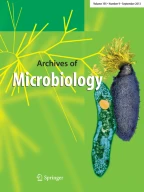Abstract
Escherichia coli was used as a model to study initial adhesion and early biofilm development to abiotic surface. Tn10 insertion mutants of Escherichia coli K-12 W3110 were selected for altered abilities to adhere to a polystyrene surface. Seven insertion mutants that showed a decrease in adhesion harbored insertions in genes involved in lipopolysaccharide (LPS) core biosynthesis. Two insertions were located in the rfaG gene, two in the rfaP gene, and three in the galU gene. These adhesion mutants were found to exhibit a deep-rough phenotype and to be reduced, at different levels, in type 1 fimbriae production and motility. The loss of adhesion exhibited by these mutants was associated with either the affected type 1 fimbriae production and/or the dysfunctional motility. Apart from the pleiotropic effect of the mutations affecting LPS on type 1 fimbriae and flagella biosynthesis, no evidence for an involvement of the LPS itself in adhesion to polystyrene surface could be observed.
Similar content being viewed by others
Author information
Authors and Affiliations
Additional information
Received: 1 December 1998 / Accepted: 3 April 1999
Rights and permissions
About this article
Cite this article
Genevaux, P., Bauda, P., DuBow, M. et al. Identification of Tn10 insertions in the rfaG, rfaP, and galU genes involved in lipopolysaccharide core biosynthesis that affect Escherichia coli adhesion. Arch Microbiol 172, 1–8 (1999). https://doi.org/10.1007/s002030050732
Issue Date:
DOI: https://doi.org/10.1007/s002030050732
